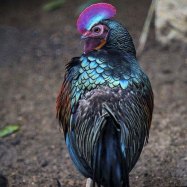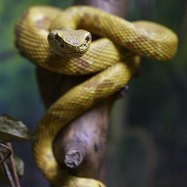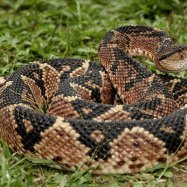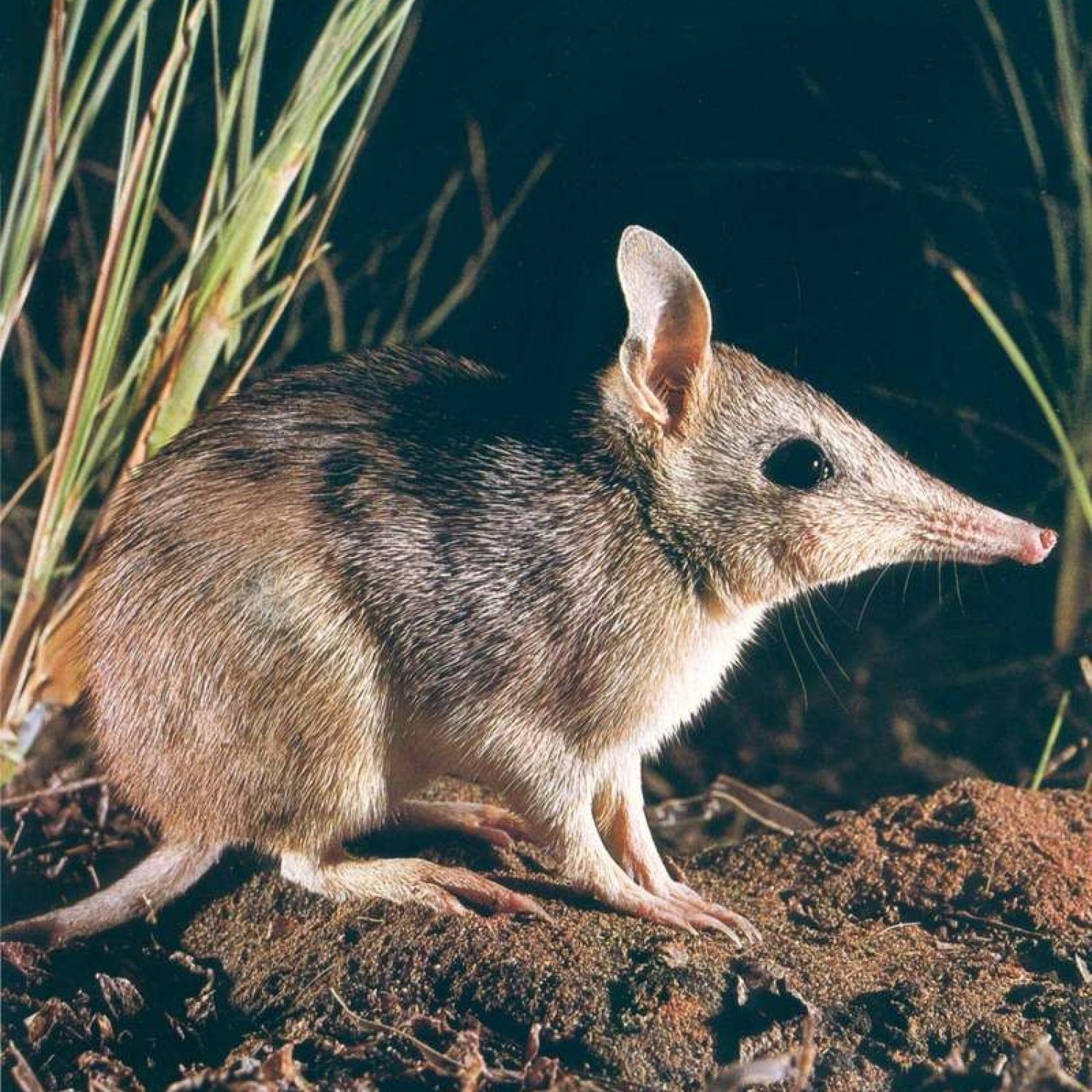
Eastern Barred Bandicoot
23 - 36 cm (9 - 14 inches)
Meet the Eastern Barred Bandicoot! Native to Victoria, this small-sized marsupial has a slim body and short legs, measuring between 23 to 36 cm in length. Belonging to the Peramelidae family, these little critters are an important part of the Australian ecosystem. Despite being classified as endangered, conservation efforts are helping to protect and increase their population. Let's continue to learn more about and protect our furry friends! #barredbandicoot #endangeredspecies #australianwildlife
Animal Details Summary:
Common Name: Eastern Barred Bandicoot
Kingdom: Animalia
Habitat: Grasslands and open grassy woodlands
The Endangered Eastern Barred Bandicoot: A Unique and Fascinating Species
The animal kingdom is home to some of the most unique and fascinating creatures, and among them is the Eastern Barred Bandicoot. This small marsupial, scientific name Perameles gunnii, is commonly known as the Eastern Barred Bandicoot and has captured the attention of scientists, researchers, and wildlife enthusiasts alike.Native to Australia, this small mammal belongs to the Peramelemorphia order and Peramelidae family. This species is considered a crucial part of Australia's ecosystem, and its gradual decline due to human interference has raised significant concerns Eastern Barred Bandicoot. In this article, we will explore the remarkable characteristics of the Eastern Barred Bandicoot and the conservation efforts being made to protect this endangered species.
The Eastern Barred Bandicoot's Habitat and Geographical Distribution
The Eastern Barred Bandicoots are found in Victoria, a state located in southeastern Australia. Within the state, these small marsupials are primarily found in grasslands and open grassy woodlands. However, due to rampant land clearing for agricultural purposes and urbanization, their natural habitat has significantly diminished.According to the World Wildlife Fund (WWF), the Eastern Barred Bandicoots' current wild population is estimated to be less than 1,500 individuals, making them one of Australia's most endangered species. This decline is mainly due to the loss of their natural habitat, predation by introduced species, and the spread of diseases.
Unique Physical Characteristics of the Eastern Barred Bandicoot
The Eastern Barred Bandicoot is a small-sized marsupial, measuring between 23 to 36 cm (9 to 14 inches). Their body shape is slim, with short legs and a small, pointed head. They have a distinct gray-brown fur color, with white bars on their hindquarters, giving them their characteristic name Eastern Kingbird.One of the most unique physical characteristics of the Eastern Barred Bandicoot is its short and stocky tail, which sets it apart from other marsupial species. Unlike most marsupials, the Eastern Barred Bandicoot does not have a pouch, as the females have inverted folds of skin which they use to protect their young.
Omnivorous Diet of the Eastern Barred Bandicoots
Eastern Barred Bandicoots are opportunistic feeders and have an omnivorous diet, meaning they consume a wide variety of food. In their natural habitat, they feed on insects, small invertebrates like worms, spiders, and also small vertebrates like lizards. They are also known to eat fruits, berries, and plant roots, making them an essential part of their ecosystem's food chain.Their foraging habits have a critical role in the ecosystem, as they help control insect populations and aid in seed dispersal, thus promoting plant diversity in their habitat.
Australia's Iconic Native Species
The Eastern Barred Bandicoot is an iconic species, not only for its unique characteristics but also for its importance in Australia's indigenous culture. In some regions, it is considered a spiritual being and is often depicted in Aboriginal art and stories.The marsupial's survival reflects the continuous struggle between modernization and maintaining Australia's cultural and natural heritage. Therefore, preserving the Eastern Barred Bandicoot's natural habitat is crucial not only for the species' survival but also for preserving Australia's rich biodiversity.
Conservation Efforts for the Eastern Barred Bandicoot
The Eastern Barred Bandicoot has been listed as critically endangered by the International Union for Conservation of Nature (IUCN). To reverse their declining population trends, several conservation efforts have been initiated in recent years.One such effort is the establishment of breeding programs and reintroduction of the bandicoots in the wild. The breeding program, run by Zoos Victoria, is a collaboration between several organizations, including the Australian government and the WWF. These programs focus on increasing their population and genetic diversity.
Additionally, conservationists in Australia have also introduced conservation reserves and fenced areas to protect the Eastern Barred Bandicoot from invasive species like foxes and cats. These efforts have been successful to some extent, with the bandicoot's population increasing in these protected areas.
The Importance of Natural Language Processing in Wildlife Conservation
Natural Language Processing (NLP) has been playing an increasingly significant role in the conservation and protection of endangered species like the Eastern Barred Bandicoot. NLP is a branch of artificial intelligence that helps machines understand and interpret human language.Conservation organizations, such as the WWF, are using NLP to monitor online discussions on potential threats to endangered species. By analyzing social media content, news articles, and other online data, conservationists can gain insights into the public's attitude towards conservation issues. This information is then used to create effective conservation strategies and campaigns.
The Future of the Eastern Barred Bandicoot
The Eastern Barred Bandicoot's journey to survival is far from over, and much more needs to be done to ensure their long-term survival in the wild. However, the successful breeding and reintroduction programs and the dedication of conservationists and volunteers bring hope for their future.By raising awareness about the Eastern Barred Bandicoot and supporting conservation efforts, we can help protect this unique and important species. Along with that, efforts must be made to conserve their natural habitat and prevent further loss of this iconic native species.
In conclusion, the Eastern Barred Bandicoot is a crucial part of Australia's ecosystem and plays a significant role in maintaining its delicate balance. Its unique physical characteristics, omnivorous diet, and cultural importance make it a species worth protecting. With the help of modern technologies like NLP and the conservation efforts of numerous organizations, we can ensure a bright future for the Eastern Barred Bandicoot. But ultimately, it is our responsibility as humans to protect and preserve this magnificent species and honor their place in our natural world.

Eastern Barred Bandicoot
Animal Details Eastern Barred Bandicoot - Scientific Name: Perameles gunnii
- Category: Animals E
- Scientific Name: Perameles gunnii
- Common Name: Eastern Barred Bandicoot
- Kingdom: Animalia
- Phylum: Chordata
- Class: Mammalia
- Order: Peramelemorphia
- Family: Peramelidae
- Habitat: Grasslands and open grassy woodlands
- Feeding Method: Omnivorous
- Geographical Distribution: Victoria, Australia
- Country of Origin: Australia
- Location: Victoria
- Animal Coloration: Gray-brown with white bars on hindquarters
- Body Shape: Small-sized with a slim body and short legs
- Length: 23 - 36 cm (9 - 14 inches)
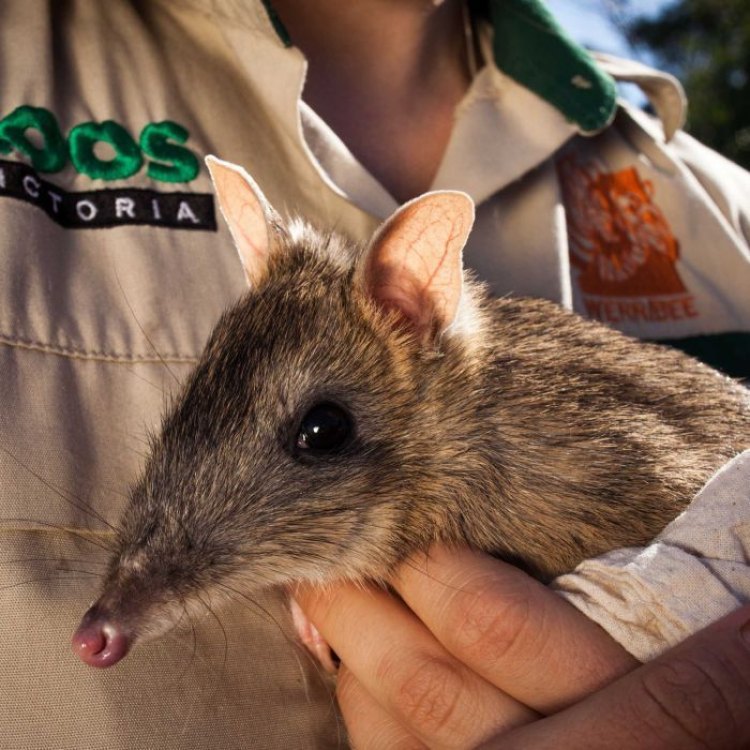
Eastern Barred Bandicoot
- Adult Size: Small
- Average Lifespan: 2 - 3 years
- Reproduction: Sexual
- Reproductive Behavior: Polygynous mating system
- Sound or Call: Quiet vocalizations
- Migration Pattern: Non-migratory
- Social Groups: Solitary, but females can form small groups
- Behavior: Nocturnal and solitary
- Threats: Habitat loss, predation by introduced species
- Conservation Status: Critically Endangered
- Impact on Ecosystem: Important for ecosystem health and seed dispersal
- Human Use: None for commercial purposes
- Distinctive Features: White bars on hindquarters
- Interesting Facts: Eastern Barred Bandicoots were once considered extinct in the wild but were reintroduced through captive breeding programs.
- Predator: Introduced predators, such as foxes and cats
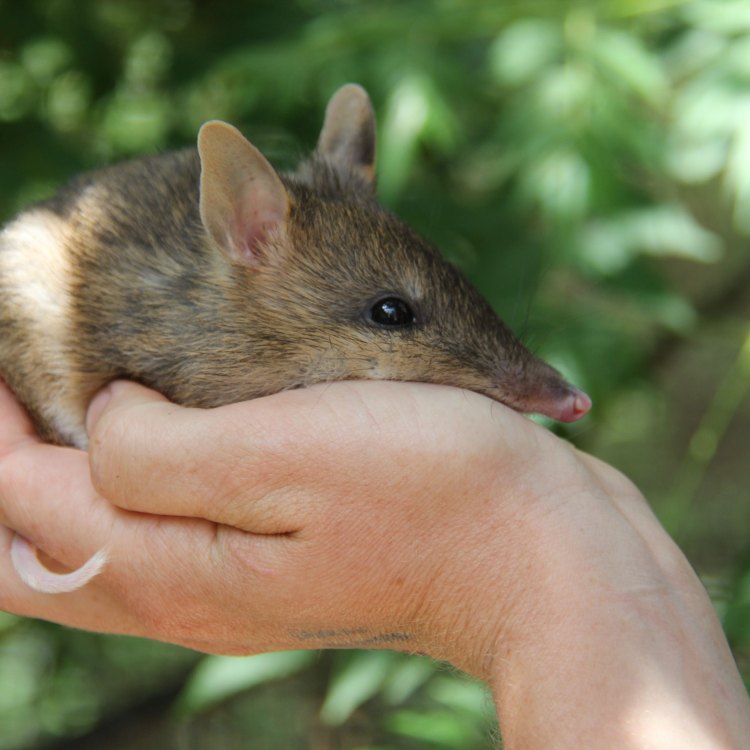
Perameles gunnii
The Re-Emergence of the Eastern Barred Bandicoot: A Story of Conservation and Resilience
Hidden within the grasslands and woodlands of Victoria, Australia, a small marsupial known as the Eastern Barred Bandicoot once roamed freely. But as time passed and human impact on the environment increased, these unique creatures began to disappear. They were forced to the brink of extinction, their habitat destroyed and their population decimated by introduced predators. It seemed that the Eastern Barred Bandicoot was destined to be just a memory, a mere relic in the pages of history PeaceOfAnimals.Com.However, against all odds, the Eastern Barred Bandicoot has re-emerged from the brink of extinction and is making a comeback in its native habitat. With the help of dedicated conservation efforts and innovative approaches, these small marsupials are once again thriving in the wild. In this article, we'll explore the fascinating world of the Eastern Barred Bandicoot, from their distinctive features to their crucial role in the ecosystem, and how they overcame seemingly insurmountable challenges.
A Small but Mighty Species
The Eastern Barred Bandicoot (Perameles gunnii) is a small marsupial, measuring just 30-40cm in length and weighing around 1-2kg. Their size and appearance are often compared to a large rat, but this comparison does not do justice to the unique features of this species.Their fur is a sandy brown color, providing excellent camouflage in their habitat. However, the most distinctive feature of the Eastern Barred Bandicoot is the white bars on its hindquarters, which can be seen when they hop or run through the grass. These bands give them their name, as they resemble the bars on a prison uniform, and provide a flash of contrast against their otherwise drab appearance.
A Short but Busy Life
While their adult size may be small, the Eastern Barred Bandicoot's range of activities is anything but Elephant. With an average lifespan of just 2-3 years, they spend their time foraging for food, reproducing, and playing a crucial role in their ecosystem.As a sexually reproducing species, Eastern Barred Bandicoots engage in a polygynous mating system, where one male mates with several females. This behavior is common among many marsupials, as it provides an evolutionary advantage to the species as a whole.
Once pregnant, females will create a nest in the grass or undergrowth, using twigs, leaves, and grass to create a shelter for their young. They typically give birth to 1-4 offspring, called joeys, who will spend the first few months of their lives developing in their mother's pouch. After leaving the pouch, the young bandicoots will still be dependent on their mothers for food and protection until they are fully grown.
Quiet but Resourceful
Eastern Barred Bandicoots are known for their quiet vocalizations, with various grunts and sniffs used as communication between individuals. While they may not be the most vocal species, they are incredibly resourceful in their foraging behaviors.As nocturnal animals, they spend their evenings searching for food in their grassland and woodland habitats. They have a diverse diet, consisting mainly of insects, spiders, and small invertebrates, but they also eat fruits and seeds. They use their long snouts and strong claws to dig through the soil and leaf litter to find their food, making them valuable contributors to seed dispersal in their ecosystem.
Another fascinating behavior of Eastern Barred Bandicoots is their habit of creating small scrapes or depressions in the soil as storage for their food. These scrapes are often located near their nests, and they use them to hide and collect extra food for times when foraging may be scarce.
Challenges and Conservation Efforts
Like many other species, Eastern Barred Bandicoots once thrived in their natural habitat, but with human expansion and development came a decline in their numbers. This decline was further exacerbated by the introduction of non-native predators, such as foxes and feral cats, which quickly became major threats to the bandicoots' survival.By the 1980s, the Eastern Barred Bandicoot was declared extinct in the wild, with only a handful of individuals remaining in captive breeding programs. But thanks to the hard work and dedication of conservationists, these bandicoots have been reintroduced back into their native habitats, and their numbers are starting to grow once again.
The Road to Recovery
The species' recovery effort began with the establishment of captive breeding programs, where specially designed facilities were created to house breeding pairs and their offspring. These programs played a critical role in saving the Eastern Barred Bandicoot from extinction, providing a safe environment for them to reproduce and thrive.Once enough individuals were successfully bred in captivity, the bandicoots were then released back into their native habitat, carefully monitoring their movements and progress. As their numbers grew, they were relocated to different protected reserves and national parks, where they could roam freely and contribute to the ecosystem.
Innovative Solutions for a Sustainable Future
Aside from captive breeding and release programs, innovative solutions have also been employed to protect the Eastern Barred Bandicoot from predators. One such solution is the use of specially designed enclosures known as "bandicoot-proof" fences.These fences, made from fine mesh and buried deep into the ground, create a safe and predator-free zone for the bandicoots to live in. This allows them to forage, breed, and live in their natural habitat without fear of being hunted by non-native predators.
Another approach to protecting the Eastern Barred Bandicoot is through the use of guardian animals. These are larger animals, such as guard dogs and Maremma sheepdogs, that are trained to protect vulnerable species from predators. By placing these guardian animals in areas where Eastern Barred Bandicoots live, they can help keep predators at bay and create a safer environment for the bandicoots to thrive.
Importance to the Ecosystem
The re-emergence of the Eastern Barred Bandicoot is not just a success story for the species, but also for the ecosystem as a whole. These small marsupials play an essential role in maintaining a healthy, balanced ecosystem, and their rapid decline had a significant impact on the surrounding environment.As seed dispersers, Eastern Barred Bandicoots help to maintain the growth and diversity of plants in their habitat. By foraging and digging through the soil, they also help to aerate and improve the quality of the soil, making it more suitable for plant growth. These small actions have a ripple effect on the entire ecosystem, contributing to its overall health and stability.
The Future of the Eastern Barred Bandicoot
While the Eastern Barred Bandicoot has made a remarkable recovery, their future is still uncertain. They are currently listed as Critically Endangered on the IUCN Red List of Threatened Species, and continued conservation efforts are vital to their survival.The main threats to the Eastern Barred Bandicoots' survival include habitat loss and fragmentation, as well as predation by introduced species. The destruction of grasslands and woodlands, often for agriculture and development, directly affects the bandicoots' ability to find food and shelter. This loss of habitat also makes it easier for introduced predators to hunt and prey on the bandicoots, further endangering their population.
A Call to Action
The re-emergence of the Eastern Barred Bandicoot is a testament to the resilience and adaptability of this small marsupial. It is also a reminder of the impact that human actions can have on our environment and the species that call it home.It is up to each and every one of us to take action to protect and preserve these unique and valuable creatures. From supporting conservation efforts to reducing our carbon footprint and consumption, we can all make a difference in creating a sustainable future for the Eastern Barred Bandicoot and other endangered species.
As we continue to face the challenges of a changing world, let us remember the story of the Eastern Barred Bandicoot and how they have overcome incredible obstacles with the help and determination of humans. By working together, we can ensure that this species, and many others, have a chance to thrive and continue to be a vital part of our planet's biodiversity.
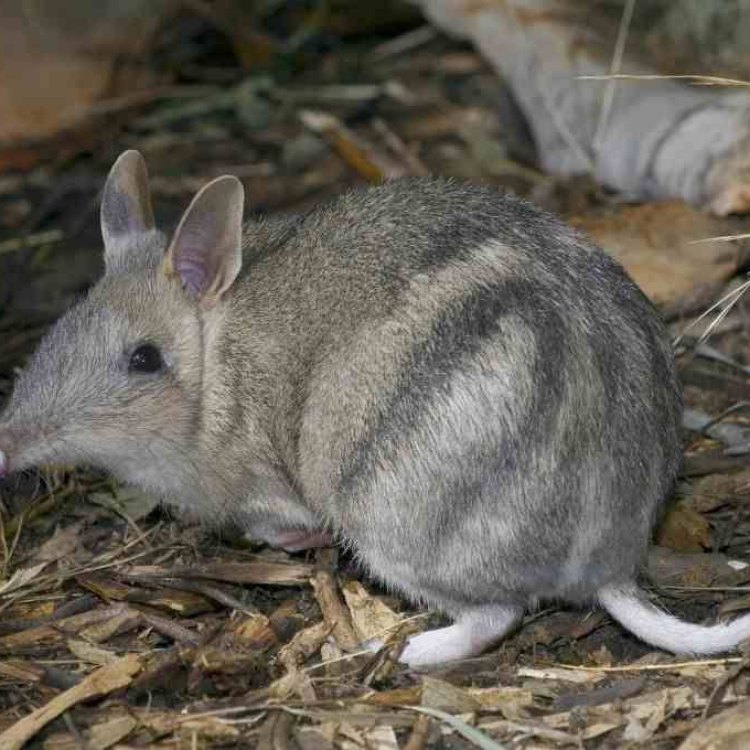
The Endangered Eastern Barred Bandicoot: A Unique and Fascinating Species
Disclaimer: The content provided is for informational purposes only. We cannot guarantee the accuracy of the information on this page 100%. All information provided here may change without prior notice.








